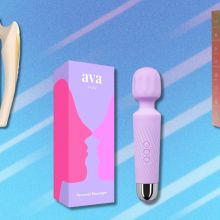Best deals on drones this week
- DJI Mini 3 4K Foldable Mini Camera Drone With Controller — $469.00 (List Price $559)
- DJI Mini 3 Fly More Combo — $658.00 (List Price $718)
- Holy Stone HS720E 4K Quadcopter With Remote Controller — $249.99 (List Price $399.99)
- Ruko F11GIM2 4K 2-Axis Gimbal Drone Bundle — $371.99 (List Price $849.99)
- Ruko F11MINI-3B Quadcopter Drone Kit With 4K Camera — $269.98 (List Price $419.98)
So your kid wants a drone. That's not surprising: They've been a hot holiday gift for a few years running, and more options than ever are explicitly marketed toward the younger set.
Still, there are a lot of drones out there, and it can be hard to tell not only which are actually good, but also which are safe, sturdy, and beginner-friendly enough for children. Your young pilot will probably crash this thing a few times, after all — in a lot of cases (though not all!), a low-cost toy drone is your best bet. (While we appreciate the feature-laden $1500 drones of the world, they're probably not what your 10-year-old should start with.) When it comes right down to it, the best drones for kids are ones that will be relatively easy to fly and can take a beating.
One of the most important things to consider is whether your kid-friendly drone plays well with the law. According to Federal Aviation Administration (FAA) guidelines, any recreational unmanned aerial vehicle (UAV) weighing between 0.55 and 55 pounds must be registered. To help you avoid that step, we've made sure to include drones here that weigh less than 0.55 pounds (8.8 ounces) — including the DJI Mavic Mini, which clocks in at a hilarious 0.549. If you must register, though, it's a pretty easy process. FAA considerations aside, a mini drone also makes for a less-steep learning curve, which makes them a great option for kids.
What parents need to know about drones
Also imperative in the drone-buying process: communicating with your child about drone rules and safety. Have questions about where you're allowed to fly? Check out the website Know Before You Fly (and its companion app B4UFLY), which features an interactive map that helps drone flyers know where they're permitted to use their aircrafts. For example, drones cannot be flown in US national parks, which is a bummer for photographers but probably good for the sanctity of nature. In the case of camera drones, you'll also want to chat about respecting others' privacy. If you're worried about mishaps, consider opting for a drone without a camera at all.
There are other rules as well, though many of them are just common sense. For instance, you'll need to keep your drone flying under 400 feet (which should not be an issue for toy drones), ensure it remains in your sight, and avoid airports, large events, and emergency responders.
It's also possible that your child may need to wait a few years before a drone is appropriate. Even drones intended for kids are geared toward ages eight and up — plus, younger kids may be tempted to put small drone parts in their mouths. On this list, we've paid particular attention to ease of operation, though beginner drone users are generally better off mastering their skills indoors before venturing out into the wind.
The above isn't to sound all doom and gloom. When used correctly, drones can be a fun pastime as well as a valuable learning tool. In fact, several colleges have made them an area of study: A 2018 story in the New York Times highlighted drone courses, research, and — in a few cases — drone degrees at dozens of universities in the United States.




















